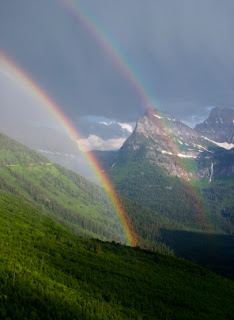Air in Motion
Wind is originated from sun energy, which heats the Earth unevenly, creating warm spots and cool spots. Two examples of this are: sea breezes and land breezes.
Sea Breezes
This happens when inland areas heat up on a sunny afternoon. This warms the air and causes it to rise. The cooler air comes in from the ocean and takes its place and a wind is born. This effect can also occur near big lakes, where the wind is called a lake breeze.
Land Breezes
These come at night, when the inland temperature drops so much that the ocean is now warmer than the land. This simply reverses the effect of the sea breezes.
Global Patterns
Forces similar to the ones discussed produce global wind patterns and affect the climate. The Coriolis effect is an offshoot of the Earth's rotation and makes moving air masses curve. Trade winds are winds converging on the Equator coming from the northeast in the Northern Hemisphere and the southeast in the Southern Hemisphere.
Farther from the Equator, the surface winds try to blow toward the Poles, but because of the Coriolis effect, they bend the opposite direction creating westerlies. This concept explains why so many weather evens in the United States come from the west.
At latitudes high than 60 degrees, cold surface winds try to blow toward the Equator, but they are also bent by the Coriolis effect. These winds produce polar easterlies.
http://science.nationalgeographic.com/science/earth/earths-atmosphere/wind/
Here is another video that can aid in the classroom discussion on wind farming from: http://www.youtube.com/watch?v=NfOZjsOaqSQ
Farther from the Equator, the surface winds try to blow toward the Poles, but because of the Coriolis effect, they bend the opposite direction creating westerlies. This concept explains why so many weather evens in the United States come from the west.
At latitudes high than 60 degrees, cold surface winds try to blow toward the Equator, but they are also bent by the Coriolis effect. These winds produce polar easterlies.
http://science.nationalgeographic.com/science/earth/earths-atmosphere/wind/
Wind Power
Much to our surprise, air is actually a fluid like every other but its particles are in gas form instead of liquid. When air moves quickly, in the form of win, the particles are moving quickly. Motion means kinetic energy which can be captured. This is just like the energy caught by the turbine in a hydroelectric dam. In a wind-electric turbine, the turbine blades are designed to catch the kinetic energy in wind. When the turbine blades capture the wind energy and start moving, they spin a shaft that leads from the hub of the rotor to a generator This generator turns the rotational energy into electricity It is all about transferring energy from one medium to another.
The process of wind power starts with the sun. When the sun heats up a piece of land, the air around that land absorbs some of that heat. The hot air begins to rise quickly because the volume of hot air is lighter than the cooler air. When the lighter hot air suddenly rises, cooler air flows to fill the gap. The rushing air in to fill the gap is wind.
References
Layton, J. (n.d.). How stuff works: How wind power works. Retrieved April 29, 2013 from http://www.howstuffworks.com/environmental/green-science/wind-power.htm
National Geographic. (n.d.). Wind, wind information, facts, news, photos. Retrieved April 29, 2013, from http://science.nationalgeographic.com/science/earth/earths-atmosphere/wind/







.jpg)
.jpg)


